|
Current
Roseville Rail Yard
Local Area High Schools and
Breathe California - Sacramento Emigrant
Trails
Lake Tahoe, TERC collaboration
Greenland
Lake Tahoe, CalTrans
Cincinnati
ACE-Asia
_____________________________________________________________________________
Roseville Rail Yard
 |
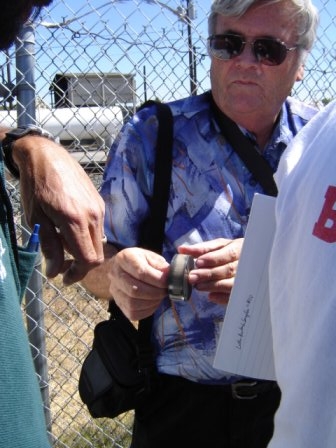 |
| Fine particles
from the Denio's Site downwind of rail yard. The dark lines that you see
are composed primarily of diesel exhaust. |
Dr. Cahill with sample of
larger size particles. The light coloration in this stage is indicative
of dust particles. |
 |
Project manager
Nick Spada and Dr. Tom Cahill Junior testing their capabilities in
sampling organics using a Lundgren sampler. |
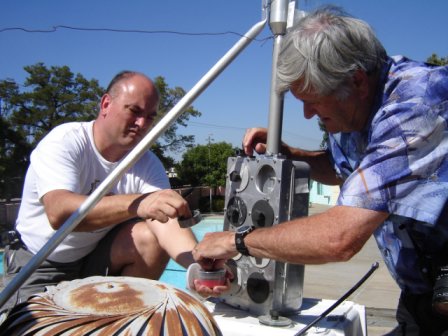 |
Dr. David
Barnes and Dr. Cahill changing out drums at the upwind Johnson Pool
site. |
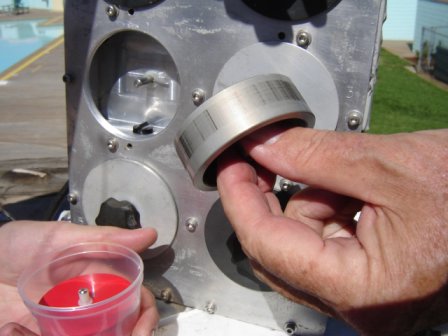 |
Fine particles
from the upwind Johnson Pool sampler. |
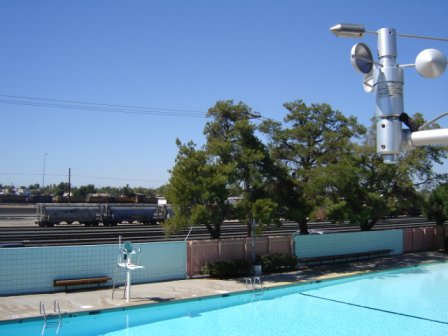 |
Placer County
meteorological data monitor, Johnson Pool, with the Roseville Rail Yard
seen in the background. |
| Photographs
by Rachel DuBose |
______________________________________________________________________________
Local Area High Schools and Breathe California
- Sacramento Emigrant Trails
For a period of six weeks in January and February, Tom Cahill
helped guide and train local area high school students in air sampling using
the DELTA Group's DRUM technology. The students also tracked weather
conditions and conducted a traffic count of vehicles on nearby roads and in
parking lots to correlate with the air quality data they obtained. After
they conduct the full series of analyses, the students are then able to
suggest improvements that will promote better air quality on their campuses.
Burbank High students and staff with Tom Cahill and representatives from the
American Lung Association Sacramento-Emigrant Trails.
 |
 |
 |
|
Tom Cahill shows where the particulates
impact |
Tom Cahill demonstrates how the DRUM sampler
functions |
Burbank High Students and Staff with Tom Cahill
and Representatives of Breathe California - Sacramento Emigrant Trails |
______________________________________________________________________________
Lake Tahoe, TERC collaboration
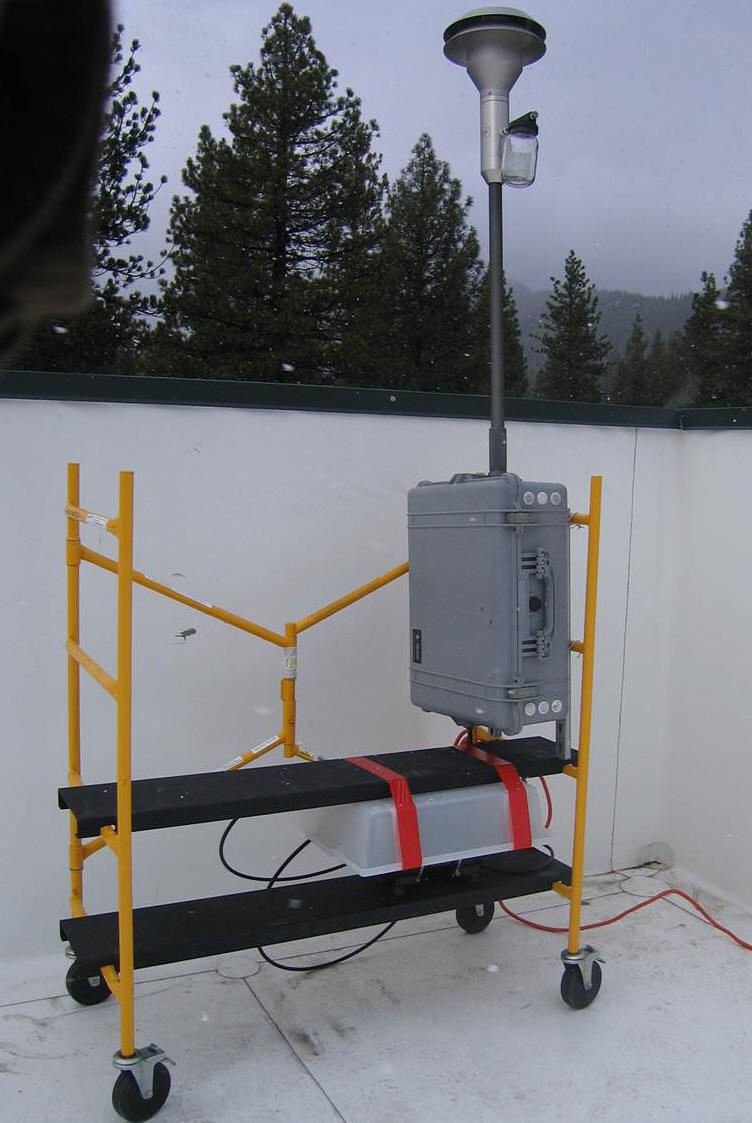
Continuous sampling with PM10 inlet across 8 size
ranges. Currently archived samples from May 2, 2007 through
July 2007
8-DRUM sampler TERC roof
Incline Village, NV
May 2, 2007
______________________________________________________________________________
Lake Tahoe CalTrans
(under construction)
The DELTA Group is
assisting CalTrans in
the evaluation of particles generated by alternative de-icing protocols on
Highway 50 at South Lake Tahoe, CA, winter, 2003-2004, and their projected
effects on the clarity of the
lake.
We were able to take advantage of archived samples from prior experiments at
Lake Tahoe since aerosols were measured at
South Lake Tahoe near Hwy 50 (just west of Bijou) from Jan 11, 2002 through
April 16, 2002, as part of a TRPA (Tahoe Regional Planning Agency) study of
fine particle impacts on visibility and lake clarity. However, to continue
the study, we installed two samplers near the lake with the current CalTrans
funding.
We collected
aerosols in 8 size modes, 10 μm to 0.09 μm, at the TRPA South Lake Tahoe (SOLA)
site and the ARB Sandy Way site, upwind and downwind of Highway 50. This
sampling began Dec. 3, 2002, picked up again on Dec. 3, 2004, and will
continue through Jan 15, 2004.
We also collected similar aerosol samples, at the TRPA South Lake Tahoe (SOLA)
site from Jan 15 to April 15, 2004.
Later, we will analyze historical samples
taken in the Period Feb - April, 2002 at SOLA to match the 2004 data.
Finally, we will correlate these data with
local and regional meteorology, CalTrans operations, and other
factors.
This contract was
extended into 2006 more sampling was done in fall 2005, and we submitted the
final report in September, 2006.
 |
 |
|
Sampling substrate with black strips of
particulate matter collected overnight at Tahoe |
Sampler, Highway 50 and Lake Tahoe |
______________________________________________________________________________
Greenland
One of the great treasures of climate research is the data from the
Greenland ice cores. These ice cores, from the sheet which holds a large
fraction of the earth's fresh water, possess layers of materials other than
just ice. One such material found in the core samples is mineral dust.
If the mineral dust layers could be correlated with atmospheric mineral
aerosols, then the cores could provide further information on the aerosols
as a function of time. This information would greatly aid in the paleo-climatic
record.
Under a subcontract with U.C. Merced and with
Professor Roger Bales as the
Principal Investigator, the DELTA Group agreed to design and build a DELTA
Group 8-DRUM sampler modified to operate during an entire year at the
Greenland ice cap. The samples are currently being analyzed for mass and
elemental concentrations using DELTA Group techniques. |
|
Past
______________________________________________________________________________
ACE-Asia
The
Tracking of Asian Aerosol Episodes using Time, Size, and Compositionally
Resolved Analyses at Surface Sites during ACE-Asia
Thomas A. Cahill, Steven S. Cliff, and Michael Jimenez-Cruz, UC Davis. Kevin D.
Perry and Wang Ming-Xing,
Meteorology Department, San Jose State University; Academy of Science, Beijing
|
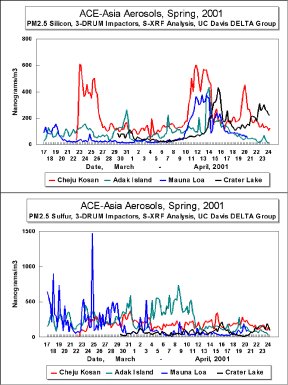 |
Tracking aerosols across the Pacific during
ACE-Asia. The values from Cheju Kosan are divided by 5. Note that peak
Silicon (soil) values during the April dust storm at Adak Island, Mauna Loa,
and Crater Lake NP decline only modestly versus distance, and that the March
dust storm was not seen at either Adak Island or Mauna Loa Observatory. |
|
|
|
|
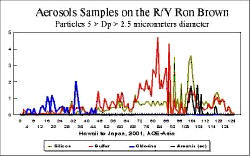
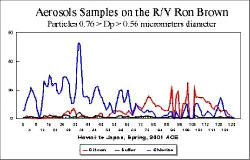 |
Preliminary
data (relative) from the cruise of the R/V Ron Brown. The zero values were
caused by the automatic wind direction sensor to avoid pollution from ship
exhaust. |
|
|
|
|
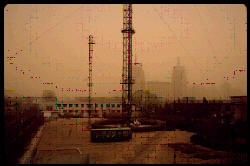 |
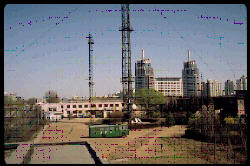 |
On the left, Chinese dust
storm.
On the right, a clear day. |
|
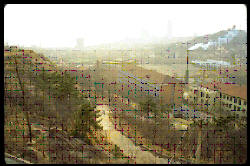 |
 |
On the left, a Chinese coal-fired power plant. On the right, dirty
filters from China v. the clean (on the bottom) from Hawaii. |
|
 |
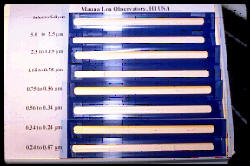 |
Strips showing polluted Chinese air on the left,
compared to cleaner Hawaiian air on the right |
____________________________________________________________________________
Cincinnati
The purpose of the project was to characterize aerosols downwind of
Cincinnati freeways as a function of distance from the freeway and season of
the year. More information will be published soon.
---------------------------------------------------------------------------------------------------------------------Collaborator Acknowledgments
Tim Bates--RV Ron Brown R. Zhang, Beijing; Jun Xu and R. Wu, Hefei, PR China
Mikio Kasahara (and group)--Kyoto/Tango/Mt. Heie, Japan Young J. Kim-Kwangju and
Cheju; Ki-Hyun Kim, Jianzhen Yu-Kosan; Prof. Kang--1100 m Cheju, Korea George
Lin – Taiwan Russ Schnell--Mauna Loa Observatory Catherine F. Cahill--Adak
Island/Poker Flat, Alaska National Park Service--Crater Lake, Oregon Funding
National Science Foundation, with help from National Oceanic and Atmospheric
Administration and National Park Service IMPROVE (samplers).
|